The effect of developed Non-Power Fire Evacuation Assistive Device on evacuation time of wheelchair users
Dohoon Koo1, Eugene Lee1, Kihun Cho1, Seondeok Eun1, Jaesoon Jang2, Keumho Oh2, Hyosun Kweon1*
1National Rehabilitation Research Institute, Seoul, Republic of Korea
2National Disaster Management Institute, Seoul, Republic of Korea
ABSTRACT
Purpose of this study was to develop Non-Power Fire Evacuation Assistive Device(NPFEAD) and evaluate the device to help wheelchair users can evacuate from upstairs to down stair without other’s help in emergence situation. NPFEAD was composed by ramp, bar, and velocity controller, so that the wheelchair users open the ramp and hold the bar to descend the ramp, then the velocity controller maintain the descending velocity of wheelchair. To evaluated the effect of the NPFEAD, Artisoc(MAS based evacuating simulation program) was used. For the simulation four cases of evacuation situation was set and compared evacuation time to assess the effect of the NPFEAD. As a result, NPFEAD had effect of decrease evacuating time. In conclusion we consume that the wheelchair users could evacuate by themselves when they used NPFEAD even faster than other situation.
BACKGROUND
 Figure 1. Structure of Non-Power Fire Evacuation Assistive Device (NPFEAD)
Figure 1. Structure of Non-Power Fire Evacuation Assistive Device (NPFEAD)
 Figure 2. Evacuator size definition in the simulation
Figure 2. Evacuator size definition in the simulation
PURPOSE
The purpose of this study was to develop the Non-Power Fire Evacuation Assistive Device(NPFEAD), and to evaluate the effect of the device using evacuation simulating system.
- To develop the non-power fire evacuation assistive device
- To evaluate effect of the NPFEAD on evacuation time using evacuation simulator
METHOD
Development of the NPFEAD
| Scenario# | Case 1 | Case 2 | Case 3 | Case 4 |
|---|---|---|---|---|
| Number of participant in the simulation | 10(Disabled) | 10(Disabled) 10(Non-disabled) |
10(Disabled) 10(Non-disabled) |
10(Disabled) 10(Non-disabled) |
| Evacuation model |  |
 |
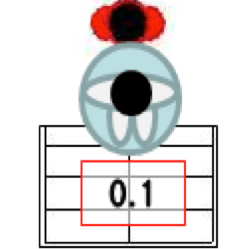 |
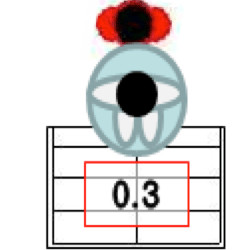 |
| Entering velocity | 0.1 m/s | 0.1 m/s | 0.1 m/s | 0.1 m/s |
| Velocity at the stairs | 0.5 m/s | 0.5 m/s(D) 1.0 m/s(N) |
0.1 m/s | 0.3 m/s |
| Velocity at ground | 0.83 m/s | 0.83 m/s(D) 1.0 m/s(N) |
0.91 m/s | 0.91 m/s |
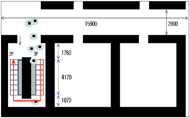 Figure 3. Structure of evacuation space
Figure 3. Structure of evacuation space
MAS based program Artisoc
Artisoc is MAS based program which developed by Kozo Keikaku Engineering Ino.(KKE). The program uses BASIC and LOGO language and two and three dimension space expression is possible. Pedestrian simulation research
Importing simulation data condition
Scenario of the evacuating simulation was composed by four cases(Table 1) and each case tried 20 times of simulation then mean of simulation result time was calculated. For the simulation data, evacuator’s size were needed to be defined. The wheelchair users and non-disabled defined as Figure 2. The people in the simulation evacuated from 3rd floor in virtual building(Figure 3). After alarming for evacuation, the people started to evacuated from their room or hallway on 3rd floor to 1st floor through the stair on left side of Figure 3.
Case 1. During the simulation evacuating, 10 wheelchair users evacuated by themselves with NPFEAD(Figure 1). Only one wheelchair user(disabled) could use the NPFEAD each time. One user got downstairs, then the next users could use the NPFEAD. When using the NPFEAD, wheelchair users had 0.5 m/s velocity during to get downstairs. To define he descending velocity, 10 times of NPFEAD velocity tests was tried and mean of the result were applied to the simulation program.
Case 2. 10 wheelchair users and 10 non-disabled evacuated together. During the evacuation, non-disabled people did not help people with disabilities. The wheelchair users used NPFEAD, and non-disabled ran down to stairs. The velocity that applied to the cases was from Ko, Youn, & Kim(2013).
Case 3 and 4. In these cases, non-disabled people supported wheelchair users to evacuate. Non-disabled people used the evacuation chair(Figure 2) to help disabled people to evacuate. In order to define the descending velocity, the advanced research result was referenced(Ko, Youn, & Kim, 2013).
Data Collection and Analysis
Each case of the simulation scenarios executed 20 times, and collected time data of finishing evacuation on every trials. The collected time data of mean was used as a result.
RESULTS
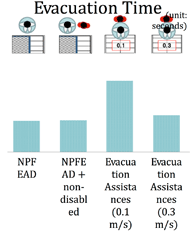 Figure 5: Result of evacuation time by the simulator
Figure 5: Result of evacuation time by the simulator
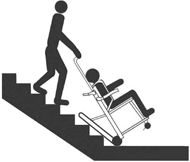 Figure 4. Evacuation chair in Case 3 and 4
Figure 4. Evacuation chair in Case 3 and 4 Case 2 was wheelchair users and non-disabled people evacuated together, but non-disabled did not help the wheelchairs users. To finish evacuation took 311.7 seconds in Case 2. I took little more time to evacuate than Case, this is because early phase of the evacuation, non-disabled people disrupted wheelchairs going down. After non-disabled people finished evacuating, wheelchairs evacuated smoothly in the simulation. However, if number of wheelchairs and non-disabled people increase, a bottleneck phenomenon can be immerse as the early phase of evacuation showed.
Case 3 and Case 4 were case that non-disabled people helped wheelchair users. Case 3 took 700.65 seconds and Case 4 took 364.25 seconds to finish evacuating. In these case time of evacuation was affected by ability of non-disabled(evacuation assistance) a lot. Also, it is difficult to realize these cases in real situation because at least one healthy non-disabled supporter is needed in order to evacuate one wheelchair, but most of places like hospitals or Social Welfare Center do not enough man power.
DISCUSSION
According to the results above, the NPFEAD can reduce evacuation time and help people with disabilities using wheelchairs to evacuate by themselves. When the NPEAD was used, it was faster than using evacuation chair. 10 of wheelchair users spent 304.85 seconds(Case 1) to evacuate, and 10 of non-disabled people supported wheelchair users to evacuate took 700.65 seconds(Case 2), and 364.25 seconds(Case 4). These result shows that developed evacuation supporting device(NPFEAD) is able to evacuate faster, and give opportunity to wheelchair users to evacuate by themselves from upstairs to downstairs. Moreover, the analysis of effect of the NPFEAD on evacuation time means that the evacuation simulator showed that the NPFEAD reduce evacuation time. This means when wheelchair users have no man and electrical support, they can evacuate by themselves even faster.
CONCLUSION
Many of people with disabilities have difficult to evacuate from the disaster or other accident by themselves. Especially people with wheelchair users in upper than second floor have more risk because of lack of capabilities to get downstairs for evacuation. The NPFEAD was developed to solve this problem, and evaluated by the evacuation simulator. The results mentioned above that procuring capability of evacuation and faster evacuation time are extremely important to safe life for wheelchair users.
Thus, when people with disabilities face to the fire in buildings, they are willing to be given opportunity to save their lives by themselves. The result of this study can be based research for it.
REFERENCES
Jang, J. S., & Rie, D. H. (2014). A Comparative Study for Dispersion Model in Evacuation Plan by using MAS-based Evacuation Simulation. Journal of the Korean Society of Safety, 29(1), 59-63.
Ko, Y., Youn, H., & Kim, J. (2013). Equipment design for stairs to evacuate people with a mobility impairment when fire occurs. Korean Society of Design Science, 26(1), 339-353.
Sim, G., Park, S., & Jung, S. (2010). Research and analysis of disaster prevention measures for vulnerable populations in disasters. Korea National Disaster Management Institute.
ACKNOWLEDGEMENT
This research was supported by a grant(14-B-01) from National Rehabilitation Center.